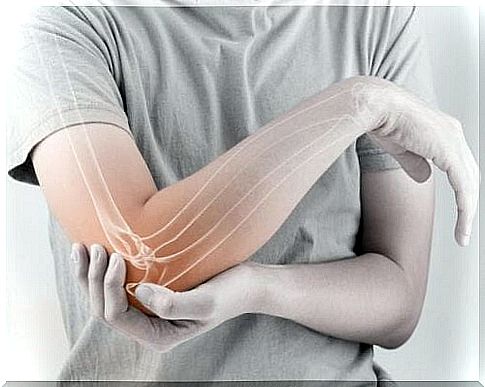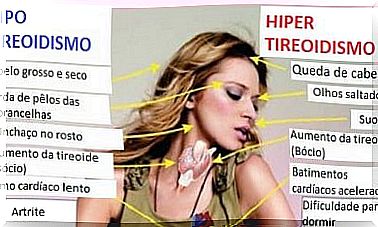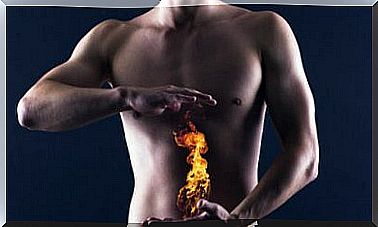Elbow Pronation, What Is It?

Elbow pronation is a pathological condition that goes by different names. It is also known as tenderness, elbow lock, and babysitting elbow. The specific technical name, in fact, is the radial head subluxation.
Perhaps the most striking denomination is that of nanny elbow. This name was acquired by the clinical picture when it was described, as it was an injury that was often caused by nannies of small children, unintentionally, when taking them by the hand.
As we will see later, when explaining the cause, it is usually trauma caused by adults to abruptly stretch one of the two upper limbs of a child. The adult in question can be the father, mother, grandparents or anyone else, but the reference to the nanny has become popular.
What is elbow pronation?
In the medical field, elbow pronation is a block in movement. The child’s elbow is unable to perform the supination movement, that is, rotating on its own axis. Blocking, of course, creates pain.
The age of presentation varies from one year to five years. It is very rare to appear in people over the age of seven. Interestingly, the left elbow is generally more affected than the right, and girls suffer from it to a greater extent than boys.
There were records of cases outside the usual age range, but these are exceptions. Bilateral presentation is also exceptional, since precisely the production mechanism is due to abrupt pulls on one side.
How does elbow pronation occur?
The injury-producing mechanism is abrupt traction. An excessive and rapid pull on one of the lower limbs causes the head of the radius to separate from its anatomical location without being able to return, blocking movement.
We must first understand that the elbow joint is a combination of three bones: the humerus, radius and ulna. The humerus is the arm bone that has its way between the shoulder and the elbow. The radius and ulna are the bones of the forearm, between the elbow and wrist.
In order for the tip of the radius to remain in place, articulating with the upper humerus and the ulna to the side, there is the annular ligament. The annular ligament surrounds the head of the radius and gives it movement, preventing it from leaving the joint.
Up to seven years old, the annular ligament is immature, weak and relaxed. It stretches easily and lacks the resilient elasticity it acquires with growth and development. Therefore, elbow pronation is more frequent in pediatric age, especially before the age of seven.
Mechanism of injury
By understanding this children’s anatomy, we can better imagine the mechanism of injury. Generally, an adult holds a small hand or wrist, and, to help him climb a step or to avoid a fall, he pulls the child’s arm abruptly and causes the radial head to overcome the resistance of the annular ligament, coming out from your place.
The elbow is locked and the child can no longer rotate the forearm to alternate between the palm up and palm down positions. Radio head out of place prevents.
No genetic inheritance has been found that makes the injury more likely. There are children who have greater laxity in their ligaments, and in them it is logical that subluxation is more possible. However, no child is exempt from suffering from this problem.

And be sure to read more: Causes of Biceps Tendinopathy
Elbow Pronation Symptoms
The prime symptom of elbow pronation is pain. Very young children express it with intense crying, and older children can readily point it to the affected area.
Pain appears immediately after the abrupt traction that caused the subluxation in most cases. The child keeps the elbow extended and resists mobilization while complaining. In addition to the straightened elbow, the affected person’s typical position is with the upper limb attached to the body.
Although the affected joint is only the elbow, it can be confused with wrist and shoulder injuries when observing the child’s position. Some adults present when the injury occurs are also confused by hearing the noise caused by the subluxation, because they interpret it as coming from another joint.
The adult causing the injury may feel an unusual stretch in the child’s limb when pulling, but it is very subjective. What will attract attention will be crying and the prolonged position of the forearm.

Treatment
It is essential that the consultation be carried out no more than twelve hours after the injury. The healthcare professional will perform the maneuvers indicated for this purpose and put the radio head back in place. Elbow movement recovers immediately.
Elbow pronation may be repeated, but is less likely as the child grows and develops. Before repetitions, the treatment is the same: the manipulation of health professionals to return the radio to its place.
So don’t despair if your child has the symptoms of elbow pronation. It is a priority to remain calm and go to an office to resolve the issue. The maneuvers performed on time and correctly do not leave sequelae and relieve pain instantly.








